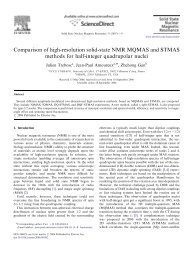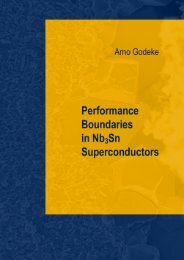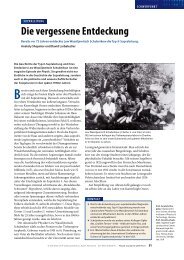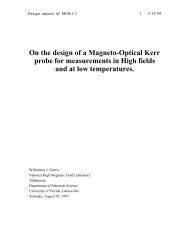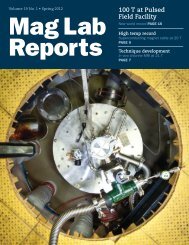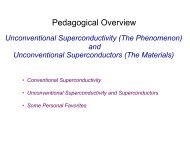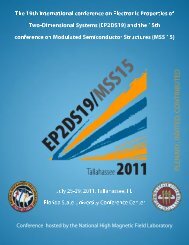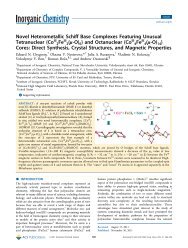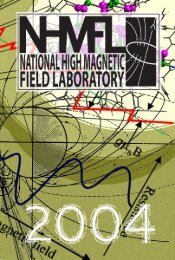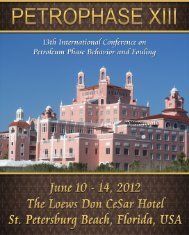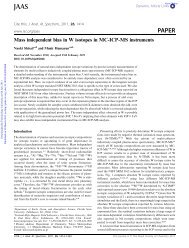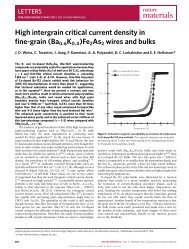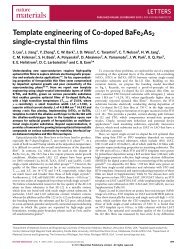Microscopes and Crystals - National High Magnetic Field Laboratory
Microscopes and Crystals - National High Magnetic Field Laboratory
Microscopes and Crystals - National High Magnetic Field Laboratory
Create successful ePaper yourself
Turn your PDF publications into a flip-book with our unique Google optimized e-Paper software.
ACTIVITY 15: WHAT VARIABLES AFFECT CRYSTAL GROWTH?<br />
m6: <strong>Microscopes</strong> <strong>and</strong> <strong>Crystals</strong><br />
EXTENSIONS:<br />
Research <strong>and</strong> Art. There are six crystal systems: cubic, tetragonal, hexagonal, orthorhombic,<br />
monoclinic, <strong>and</strong> triclinic. Research the different crystal shapes <strong>and</strong> design a model of one of<br />
them to be shared with the class. Find the names of minerals that represents each system.<br />
Research <strong>and</strong> Writing. Stalactites <strong>and</strong> stalagmites are structures often found in caves. Students<br />
pretend that they are tour guides explaining how these structures form to people on a tour.<br />
Write a script explaining this process. Encourage students to use models or visual aids that<br />
explain these <strong>and</strong> other stone features created by groundwater deposits.<br />
HISTORICAL VIGNETTE:<br />
DOROTHY CROWFOOT HODGKIN (1910-1994)<br />
Dorothy Hodgkin, a Nobel Prize winning chemist made important<br />
contributions to biology, chemistry <strong>and</strong> physics during her lifetime.<br />
She was born in Cairo, Egypt but lived most of her life in Engl<strong>and</strong>.<br />
At an early age, she developed an interest in chemistry <strong>and</strong> crystals,<br />
<strong>and</strong> on her sixteenth birthday received a book about using x-rays to<br />
study crystals from William Henry Bragg, a Nobel Prize winner in<br />
physics. This gift increased her interest in crystals, <strong>and</strong> started her<br />
on a career path toward using x-rays to study the shape <strong>and</strong> structure<br />
of crystals found in living things.<br />
Although she was sick with rheumatoid arthritis from the time she<br />
was 24 years old, Hodgkin became one of the most skilled<br />
crystallographers of her time. She always chose projects to work on that others thought were<br />
impossible or too difficult. Hodgkin’s hard work <strong>and</strong> knowledge of math, chemistry, physics<br />
<strong>and</strong> biology enabled her to determine the structure of penicillin, vitamin B-12, <strong>and</strong> insulin. The<br />
work she did using x-rays to discover the structure of these crystals helped other scientists learn<br />
how to determine the molecular structure of almost any crystalline material. Hodgkin was only<br />
the third woman to receive a Nobel Prize in Chemistry. This prize was awarded for her discovery<br />
of the structure of Vitamin B-12 <strong>and</strong> for other discoveries she made that changed the way<br />
scientists study chemistry.<br />
SCIENCE, OPTICS & YOU GUIDEBOOK<br />
- 139 -



